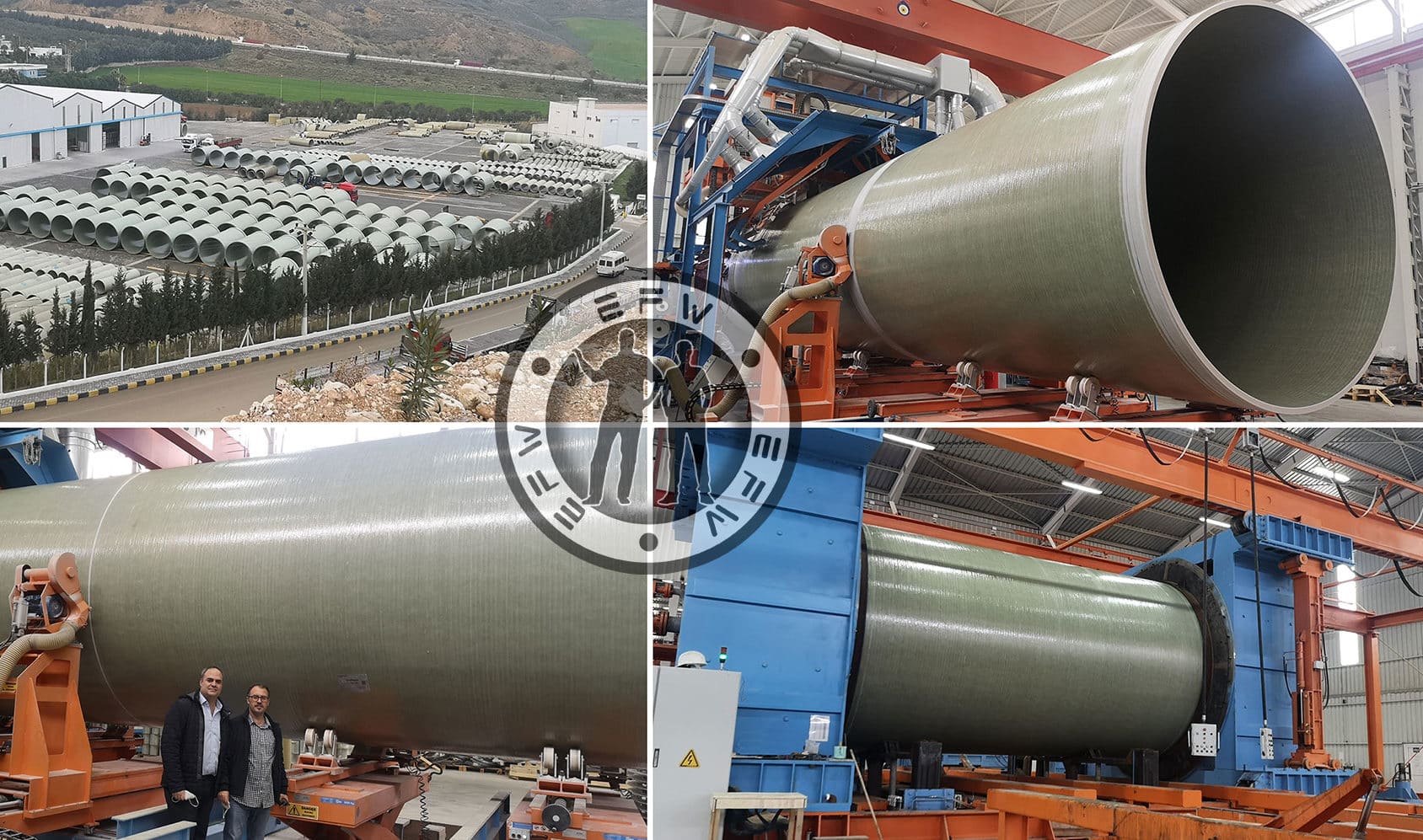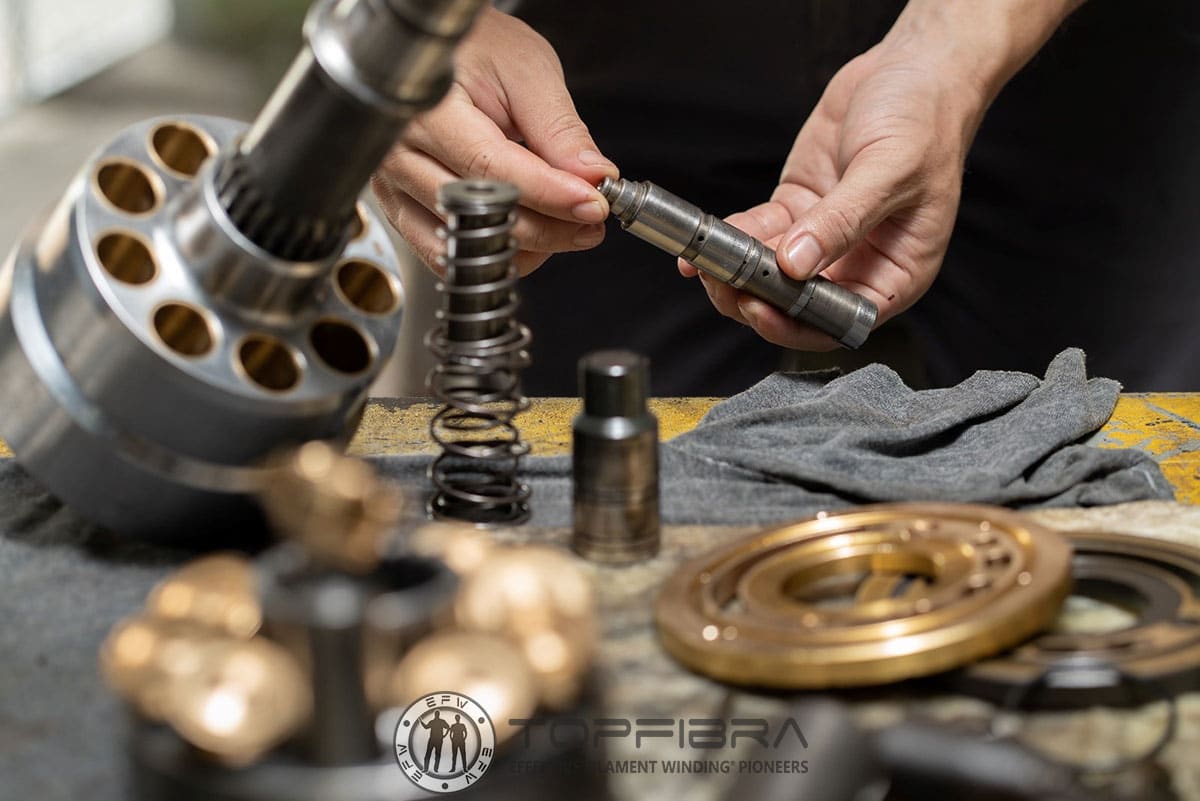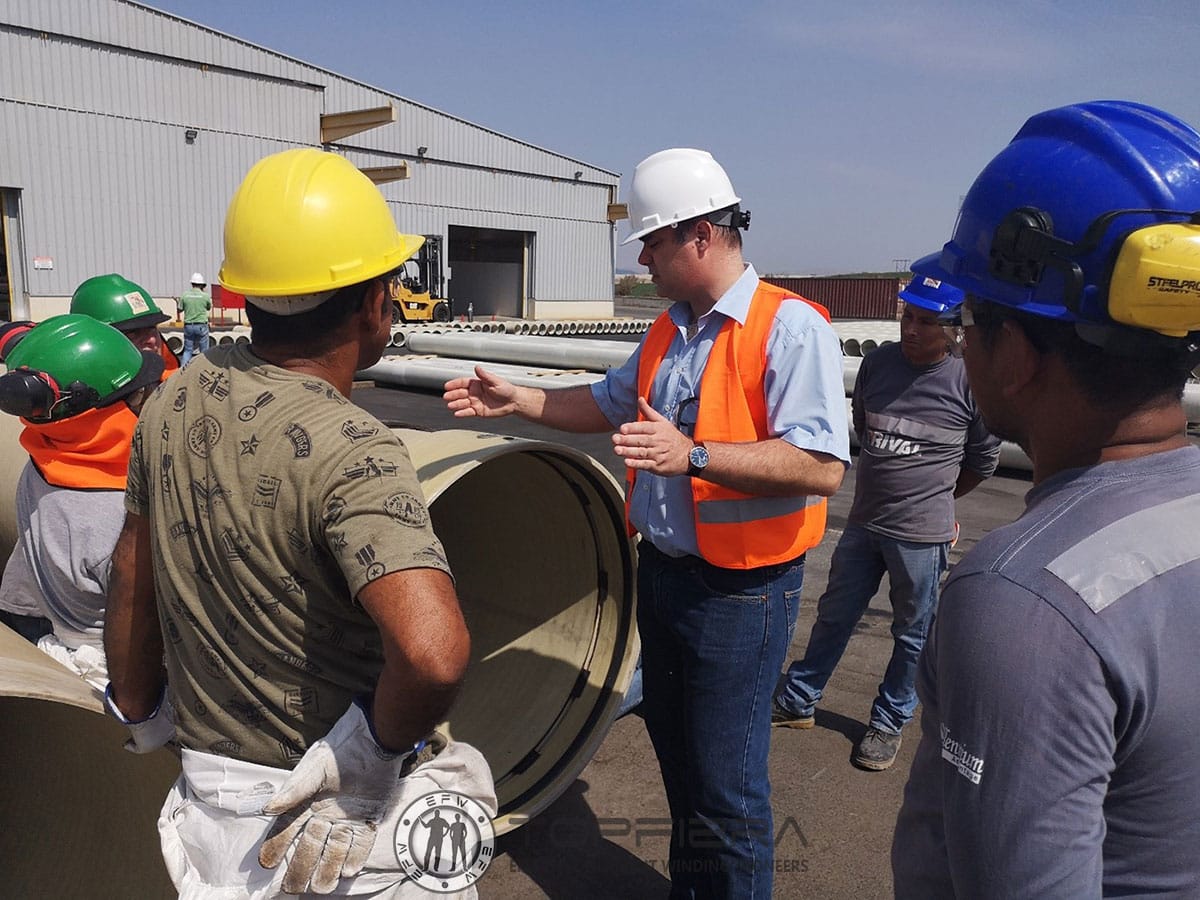A trouble in the GRP production department
Imagine the following scenario:
It is a Thursday afternoon. Only 24 meters to go to complete the ND 2200 NP 10 St 5000 production run. The process is under control, the pipe diameter is within tolerance. You have asked your operators to stay an extra hour to complete the order.
Suddenly, the machine stops and you see multiple alarms springing up in the supervisor’s monitor. You try and reset the alarms but the machine will run only in manual mode, so you decide to remove the pipe from the mandrel before it is too late.
You quickly call your electrician and the automation manager, but the problem seems difficult to solve.
Only 24 meters of pipe, but you are not able to complete the job as planned. You will need to call the customer whom you promised a specific delivery date to inform him that the inspection originally scheduled for the next day will need to be canceled because the last 2 pipes have not been produced.
And you know that if everything goes well, you will need to start the production again once the problems are solved, just to produce a few meters of pipe, hoping that the shutdown can be solved as soon as possible.
This is a brief account which, in a short paragraph, provides a view of what often happens in many GRP production departments.
Preventive measures and efficient countermoves
If you are a Production Manager operating a standard CFW machine every day, you are probably familiar with this. And it is something you have already experienced yourself, having to then face the direct and indirect consequences.
I do not need to remind you about that feeling when you have to pick up the phone to call the customer to cancel the inspection. It is not a pleasant feeling and it tends to negatively affect your mood.
However, there are several actions that you can implement to avoid such unpleasant situations:
You need to adopt preventative measures and to implement efficient countermoves.
As usual, to solve a potential problem, it is essential to start from the right question:
“What can we do in terms of production strategy to improve this aspect and avoid the constant loss of money?”
Situations like the one described above happen when the importance of specialized ASSISTANCE and MAINTENANCE is underestimated. You only take immediate action and try to ‘patch things up’ whenever there is a problem or a failure occurs, through crisis management.
As I informed you before, we perform several audits in GRP plants worldwide. Unfortunately, I am aware of many companies that implement only minimum maintenance and then suffer a high percentage of expected downtime.
They usually justify themselves by saying:
“… but we don’t have time to stop for maintenance, we need to produce. When something breaks, we repair it there and then”.
Such statements and justifications are extremely dangerous for the future of your company and for your production department. You need to avoid these, focusing a lot of your energy on this task.
The truth about preventive assistance and maintenance
To avoid you hiding continuously behind pointless excuses to then have to face obstacles that are almost impossible to overcome, you need to take immediate action.
To do so, the best solution is to implement practices and techniques in your department straight away, to anticipate and prevent as many unforeseen events as possible.
Let me share with you the fundamentals of Total Productive Maintenance (TPM) to help you achieve maximum plant efficiency by focusing on the reliability of processes and the elimination of downtime.
Where does the expression “Total Productive Maintenance” come from or rather what does it mean exactly?
Maintenance refers to an activity designed to maintain the efficiency of machines over time.
Productive, i.e. functional to production as it aims to improve the productivity of machines.
And Total implies the active involvement of all personnel, not just the mechanical maintenance operator.
As always, everything is about people with their skills and intellect. You need to understand right away that without their active participation, there is no improvement.
TPM aims to achieve maximum plant efficiency by focusing on the reliability of processes and the elimination of downtimes.
The importance of Training
TPM is an essential tool, especially in Capital Intensive companies, where the cost of production plants is considerable.
It is possible to make plants efficient by structuring a maintenance system based on what I define as the 3+1 cornerstones of TPM. There are also other cornerstones, but as always, I want you to apply the most incisive ones, which I have seen work at their potential.
Namely:
- Preventive Maintenance: correct, periodic and prompt checks on machines (servicing, oil and filter change at set intervals);
- Autonomous Maintenance: how machine operation is managed by operators on a daily basis;
- Continuous improvement: the study and achievement of Continuous Improvement for production processes, based on the Kaizen approach of continuous self-development.
The magic ingredient, the +1, is Training, i.e. continuous professional growth and increase in the skills of all the people involved.
MAINTENANCE IS REQUIRED TO GENERATE PROFIT – IT IS AN ESSENTIAL PART OF PRODUCTION!
It should not be regarded as the ‘fifth wheel’, undersized and ready to operate only when there are breakdowns in the company.
On the one hand, there are activities like cleaning, inspection, lubrication and checking to tighten. Basic aspects to teach and manage independently for an operator working on the machine.
On the other hand, you need continuous data analysis and the related study of the lifecycle of the components of your Plant.
Preventive maintenance is the set of actions carried out in advance, to prevent failures
Below is a tangible example to break down the concept into super simple ideas and make it as clear as possible.
For a moment, imagine your car’s timing belt and the idea of having to replace it.
There are 2 approaches to the issue.
In one case you might say: “The timing belt is still intact. I will wait for it to break.” But then I blow the engine and I have to throw everything away (this is breakdown maintenance).
But in the second case it is very different to say: “The timing belt is intact but, as it has completed a certain number of kilometers, it’s time to replace it.” Because the likelihood of damage increases after a certain period of time, so I replace it in advance (this is preventive maintenance).
I have yet to see a component that does not wear out when it comes to systems in motion. The starting point is very simple: every component is subject to wear and tear.
If I am aware of this, then I can plan for proper Preventive Maintenance. First of all, however, there is the need to realize and be aware of the situation.
Implementing TPM not only enables you to prevent failures but also reduces defects, shutdowns, machine downtime, reprocessing and adjustments.
The aim is to do whatever can be done in advance, doing everything possible to achieve increased machine efficiency.
What are the main actions of TPM?
In a nutshell, the features and main actions of TPM can be described as follows:
- Promote improvement activities to increase the efficiency of plants;
- Design a preventive maintenance system;
- Generate an autonomous maintenance system, by fully optimizing the use of your resources;
- Instruct and train operators who need to fully understand the machine they are operating or maintaining;
- Eliminate the 6 big losses caused by breakdowns, setup and tooling, slowdowns, micro-stops, performance losses at start-up and losses due to non-conformity.
These are all points that certainly cannot be overlooked and are all essential if you really want to have a high-performance production department, that will be able to thrive competitively in the years to come.
Do you have a continuous filament Winding machine that has been producing for more than 7 years?
Are you ready to understand what would change in your production department by applying a specific Preventive Maintenance system?




